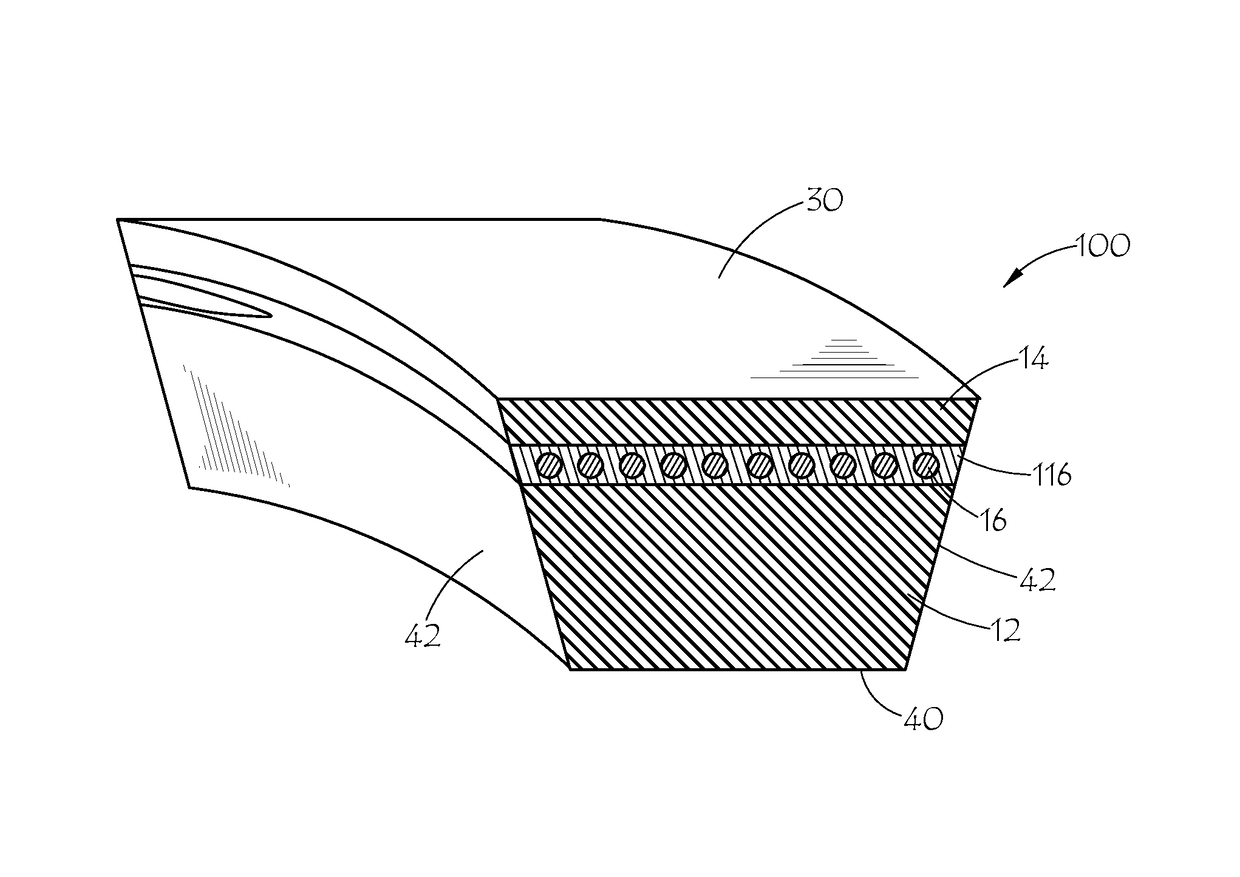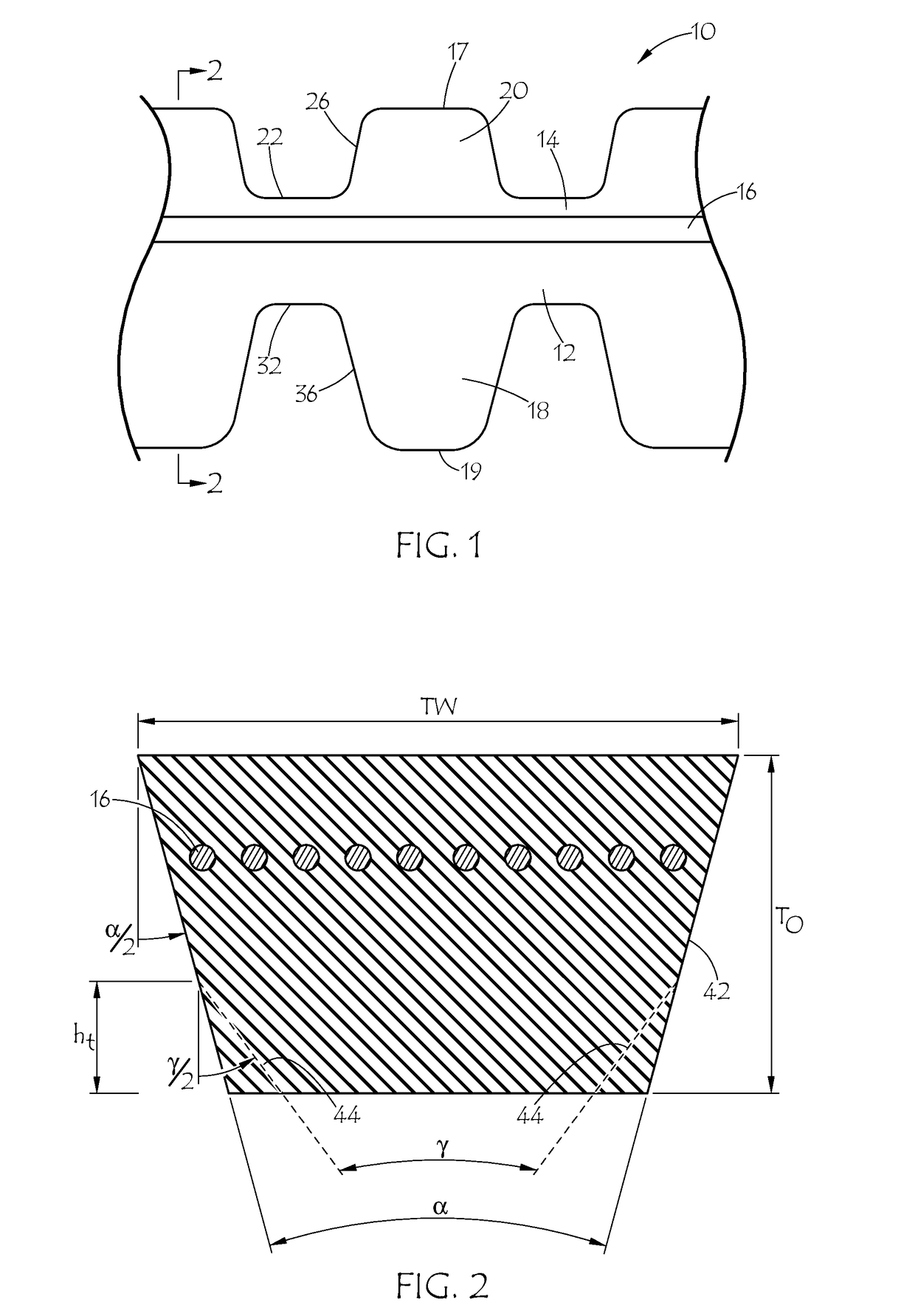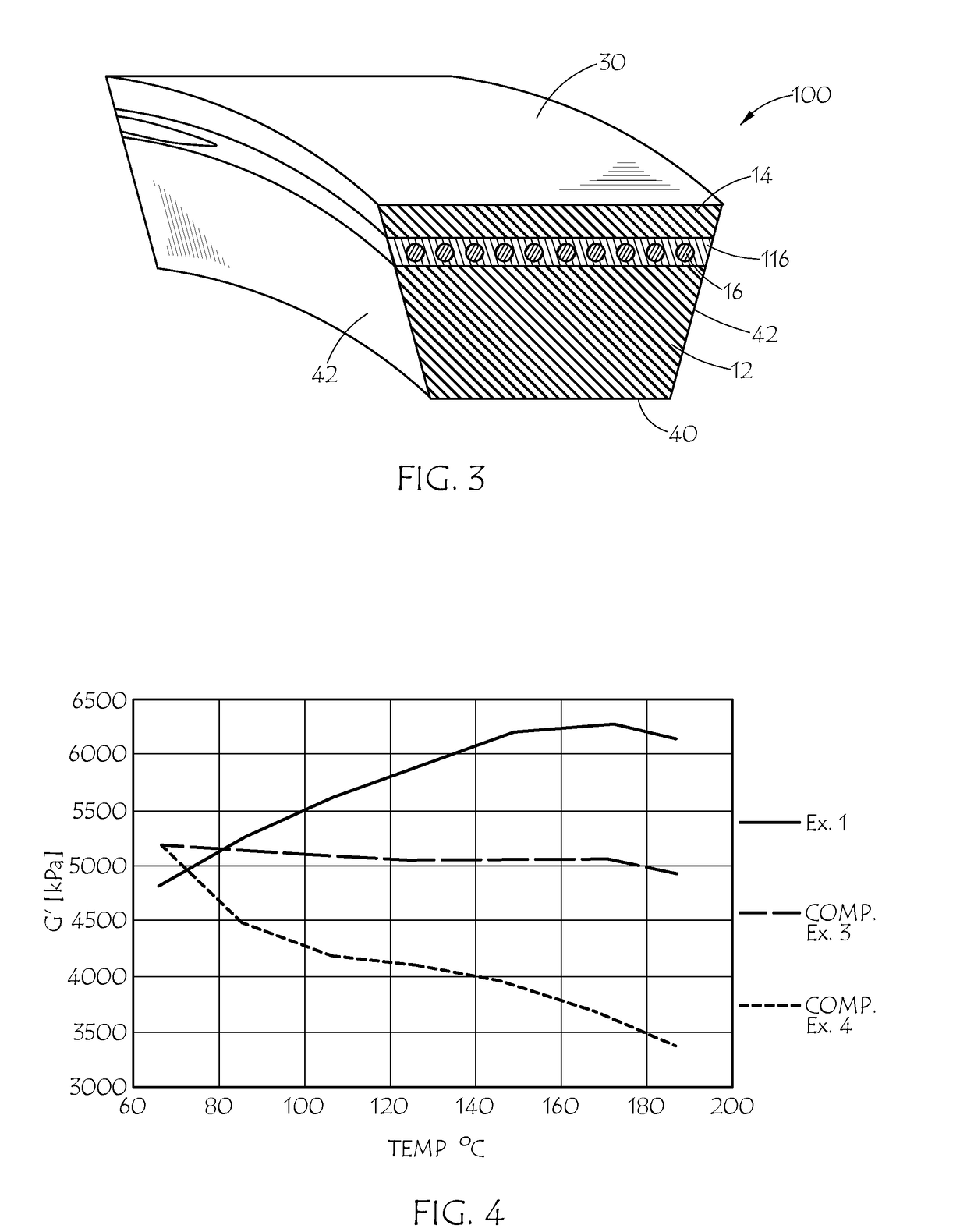CVT belt
a transmission belt and transverse force technology, applied in the direction of v-belts, driving belts, belts/chains/gearrings, etc., can solve the problems of high transverse compressive forces and frictional forces on the belt, additional frictional forces on the contact surfaces of the belt, and may be very severe in a cvt, so as to achieve significant performance benefits and high transverse stiffness
- Summary
- Abstract
- Description
- Claims
- Application Information
AI Technical Summary
Benefits of technology
Problems solved by technology
Method used
Image
Examples
examples
[0056]In the following examples, inventive examples are indicated as “Ex.” And comparative examples as “Comp. Ex.”
[0057]In a first set of examples, the rubber compositions are shown in volume percent in Table 1, and in phr in Table 2. Ex. 1 and Ex. 2 illustrate rubber compositions based on EOM elastomer with two different ratios of Kevlar pulp to para-aramid (1-mm chopped Technora) staple fiber. Comp. Ex. 3 is based on EPDM with similar fiber levels as Ex. 2, while Comp. Ex. 4 is based on CR elastomer. Note that the EPDM elastomer is Vistalon 2504, from Exxon, with a very low Mooney viscosity of about 25, and a broad molecular weight distribution, and includes about 10 phr of oil, all features intended to help with dispersing the high fiber loading. The EOM elastomer, on the other hand has a much higher Mooney viscosity of about 37, (indicating higher molecular weight), and practically no added oil, yet it was found that the EOM compositions were much easier to mix, mill and calende...
PUM
| Property | Measurement | Unit |
|---|---|---|
| volume percent | aaaaa | aaaaa |
| volume percent | aaaaa | aaaaa |
| temperature | aaaaa | aaaaa |
Abstract
Description
Claims
Application Information
 Login to View More
Login to View More - R&D
- Intellectual Property
- Life Sciences
- Materials
- Tech Scout
- Unparalleled Data Quality
- Higher Quality Content
- 60% Fewer Hallucinations
Browse by: Latest US Patents, China's latest patents, Technical Efficacy Thesaurus, Application Domain, Technology Topic, Popular Technical Reports.
© 2025 PatSnap. All rights reserved.Legal|Privacy policy|Modern Slavery Act Transparency Statement|Sitemap|About US| Contact US: help@patsnap.com



